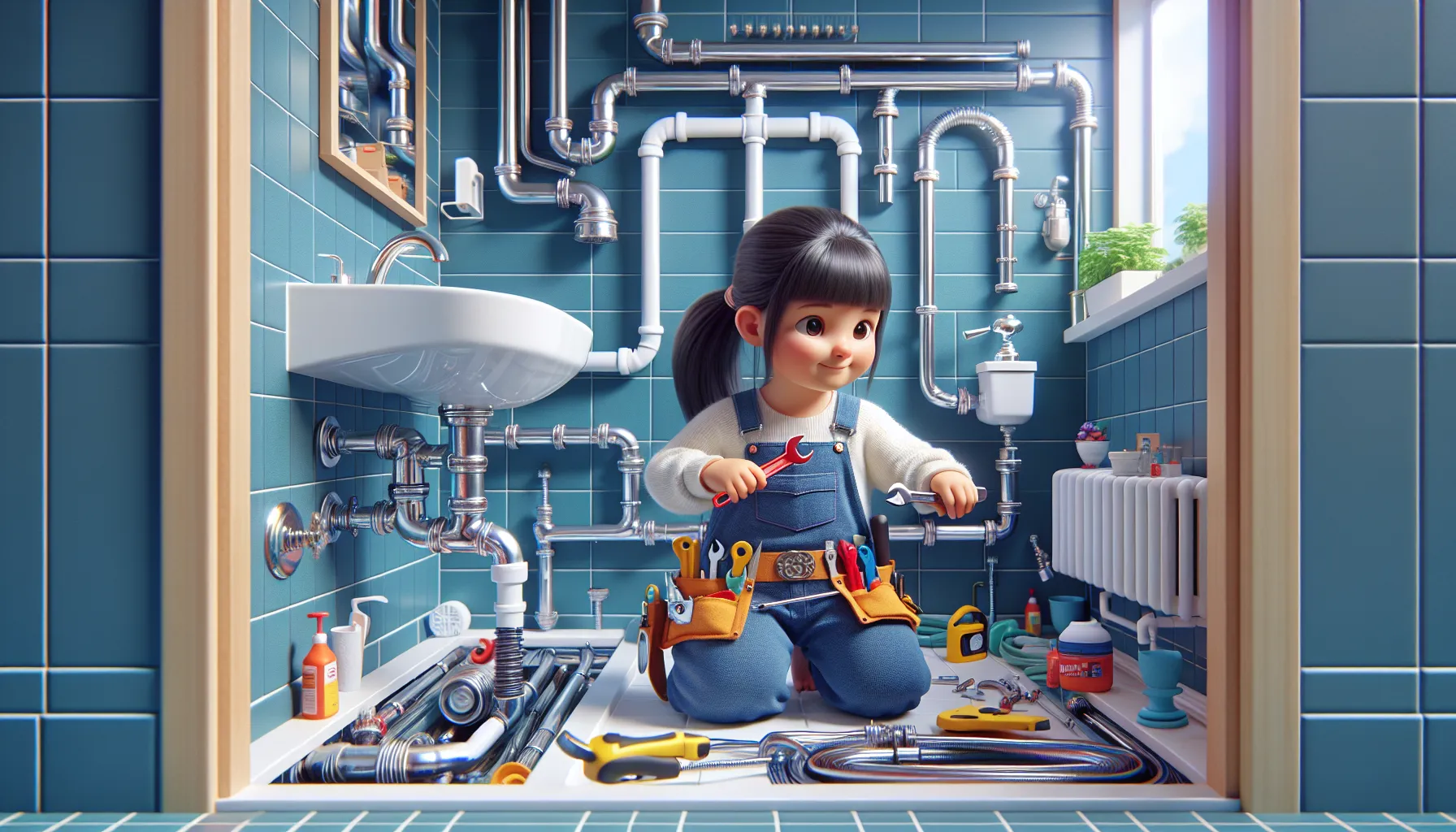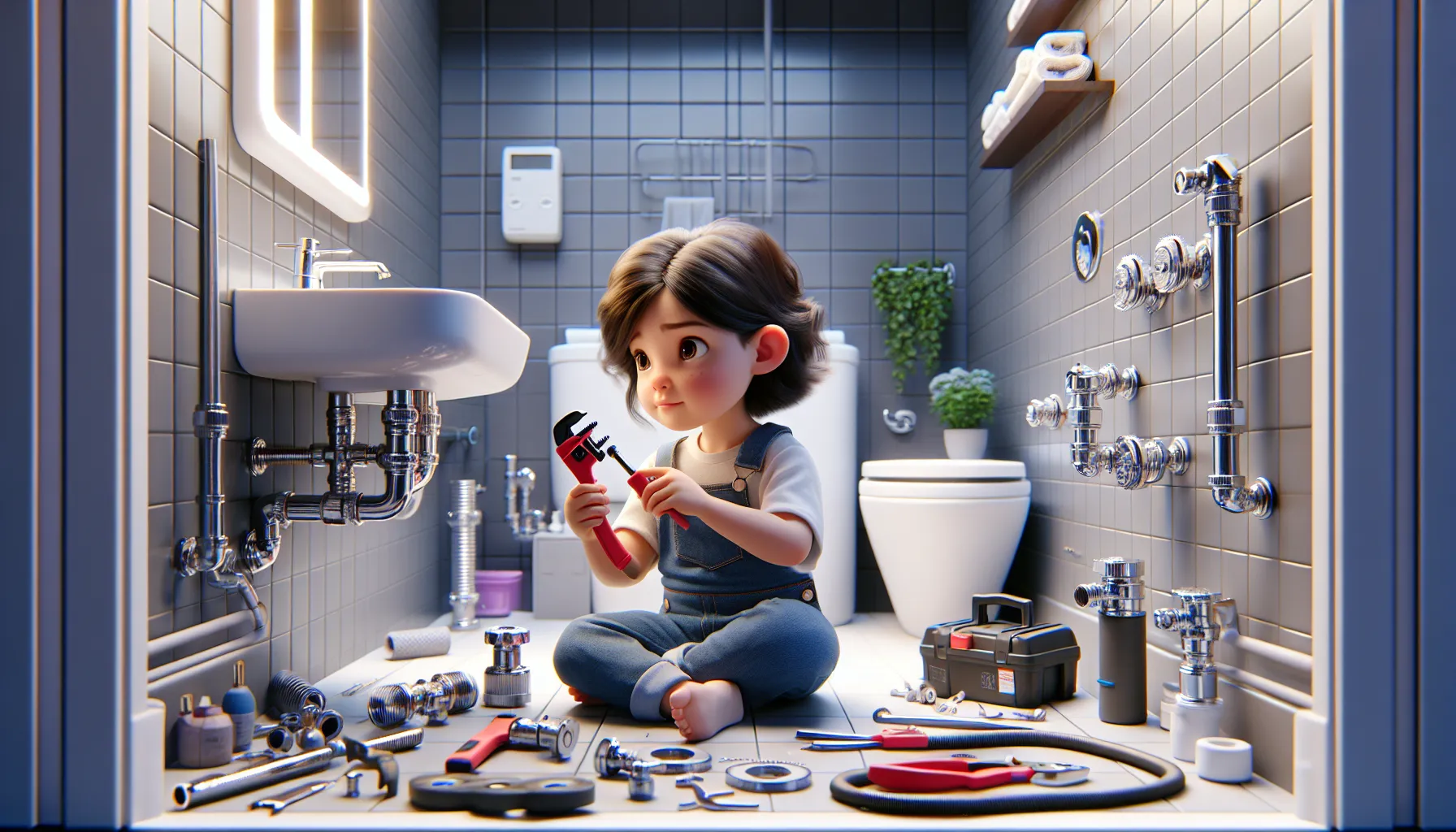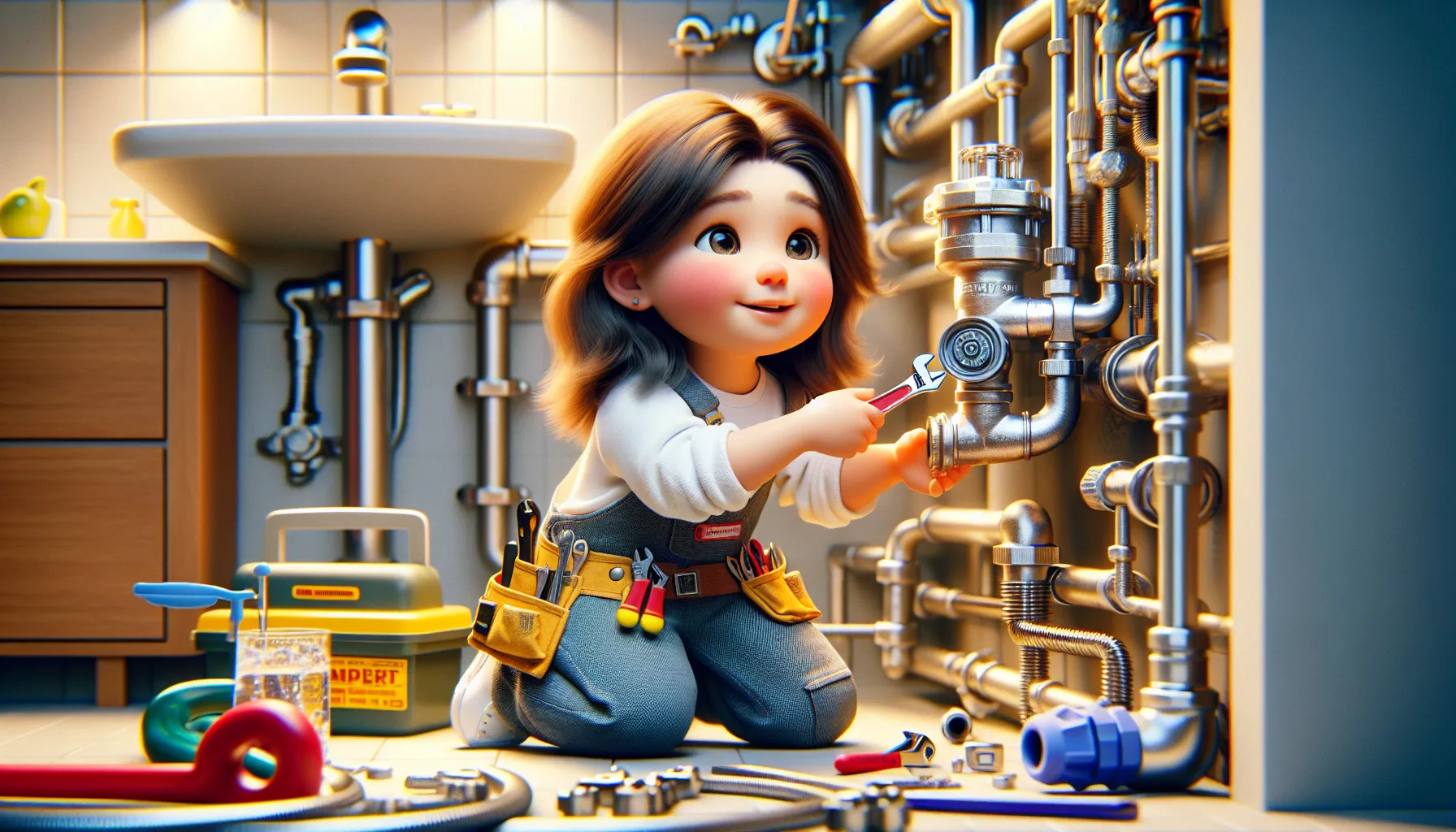It is crucial to properly vent your plumbing system to ensure the safe and efficient operation of your home’s water and sewer lines. Without adequate ventilation, dangerous sewer gases such as methane, hydrogen sulfide, and ammonia can build up in your pipes and enter your living space, posing a health risk to you and your family.
Properly venting your plumbing system also prevents sewer backups, eliminates unpleasant odors, and maintains the proper functioning of your drains. By following local building codes and ensuring that your plumbing system is properly vented, you can protect your home and your loved ones from potential health hazards and costly repairs.
Key Takeaways:
- Prevents foul odors: Properly venting your plumbing system helps to release toxic gases and prevent foul odors from entering your home.
- Prevents gurgling drains: Adequate venting ensures that air can flow through the pipes, preventing gurgling sounds when water drains.
- Prevents slow drainage: Proper ventilation allows water to flow smoothly through the pipes, preventing clogs and slow drainage issues.
- Protects your plumbing system: Adequate venting reduces the risk of pressure buildup, which can damage your pipes and lead to costly repairs.
- Ensures the efficiency of your plumbing system: Proper venting helps your plumbing system operate efficiently, saving you money on maintenance and repairs in the long run.
Fundamentals of Plumbing Ventilation
Definition and Purpose of Plumbing Vents
Vents are an vital component of any plumbing system. They serve a crucial role in allowing air to enter the pipes, which helps water flow smoothly through the drains. The primary purpose of plumbing vents is to prevent airlock situations that can hinder drainage and cause unpleasant odors to emanate from the pipes.
How Plumbing Vents Work
Plumbing vents are typically connected to the drain pipes near fixtures such as sinks, toilets, and showers. These vents extend through the roof of the building to allow odors and gases to escape outside, instead of lingering within the plumbing system. Properly vented plumbing systems also prevent dangerous sewer gases from entering the building, which can pose serious health risks to occupants.
For instance, if the plumbing system in a building is not adequately vented, sewer gases like hydrogen sulfide can build up and seep back into the living spaces, causing potential health hazards. This is why ensuring that plumbing vents are correctly installed and maintained is crucial for the safety and efficiency of any plumbing system.
Requirements and Codes
Some of the most important aspects of ensuring a properly functioning plumbing system are following the requirements and codes set forth by relevant authorities. Failure to adhere to these standards can result in a variety of issues, including leaks, blockages, and even health hazards.
International Plumbing Code (IPC) Standards
On an international level, the International Plumbing Code (IPC) sets the standard for plumbing requirements and codes. Developed by the International Code Council (ICC), the IPC establishes minimum regulations for plumbing systems in residential and commercial buildings. These standards cover everything from pipe sizing to fixture installation, ensuring that plumbing systems are designed and installed correctly to promote safety and efficiency.
Variations in Local Plumbing Codes
Standards for plumbing systems can also vary at the local level, with individual municipalities and states often having their own set of codes that must be followed. While these variations can sometimes be confusing, they are typically in place to address specific regional concerns or conditions. It’s crucial for plumbers and homeowners to be aware of local variations and ensure that their plumbing systems meet all applicable codes to prevent any issues down the line.
Venting Problems and Solutions
Common Venting Issues
With proper venting being crucial for the efficient operation of a plumbing system, it is crucial to address common venting issues that may arise. Some of the most frequent problems include blockages caused by debris, improper vent pipe slope, and inadequate vent pipe sizing. These issues can lead to slow drainage, gurgling noises, or even sewer gas odors entering the home.
Troubleshooting and Fixing Venting Problems
Venting problems can be frustrating, but they are usually straightforward to diagnose and fix. By checking for blockages or debris in the vent pipe, ensuring proper vent pipe slope, and confirming that the vent pipe is adequately sized, many venting issues can be resolved. In some cases, adding a vent stack or extending an existing vent pipe may be necessary to improve ventilation and prevent future problems.
Venting problems can not only disrupt the functionality of your plumbing system but also pose health risks due to sewer gas exposure. It is crucial to address venting issues promptly to prevent potential health hazards and ensure the proper operation of your plumbing system.
Types of Plumbing Vents
Not properly venting your plumbing system can lead to a host of issues, including slow drainage, gurgling pipes, and even sewer gas backup in your home. To avoid these problems, it’s crucial to understand the different types of plumbing vents available and how they function. Here are some common types of plumbing vents you may come across:
- Wet Venting
- Air Admittance Valves (AAVs)
- Stack Vents and Vent Stacks
- Loop Vents
Recognizing the importance of proper venting is the first step in ensuring your plumbing system operates efficiently and safely.
Wet Venting
An effective ventilation system is crucial for maintaining proper plumbing functionality. One common type of vent is the wet vent, which allows for the venting of multiple fixtures through a single pipe. This setup can be cost-effective and space-saving, making it a popular choice in many residential and commercial buildings.
Air Admittance Valves (AAVs)
The use of AAVs provides an alternative method for venting plumbing systems without the need for traditional vent pipes that extend through the roof. These valves open to allow air into the drain system when needed and close to prevent sewer gases from escaping. The flexibility and versatility of AAVs make them a convenient option for plumbers and homeowners alike.
The installation of AAVs must comply with local building codes and regulations to ensure the plumbing system operates safely and efficiently.
Stack Vents and Vent Stacks
Stack vents (also known as vent stacks) are vertical pipes that extend from the plumbing drain system to the roof of a building. These vents help regulate air pressure in the drainage system, preventing sewer gases from entering the living space. Properly functioning stack vents are vital for maintaining a healthy and odor-free indoor environment.
To ensure optimal performance, stack vents should be installed correctly and inspected regularly by a qualified plumber.
Loop Vents
On modern plumbing systems, loop vents are often used to increase ventilation and prevent trap seals from being siphoned. These vents create a loop in the drainage system, allowing air to flow freely and maintain proper drain functionality. Proper installation and positioning of loop vents are key to ensuring the plumbing system operates effectively and efficiently.
Vents play a critical role in the plumbing system, and understanding the different types available can help you make informed decisions about your ventilation needs. It is vital to consult with a professional plumber to determine the best venting solution for your specific plumbing system to avoid potential issues in the future.
Proper Installation Techniques
Many factors contribute to a well-ventilated plumbing system, with proper installation being key. It is necessary to follow best practices to ensure that the vent system functions effectively and efficiently.
Best Practices for Vent Placement
With vent placement, it is crucial to position vents strategically to allow for optimal air flow and pressure relief within the plumbing system. Vents should be installed vertically and extend through the roof to prevent backflow of gases and odors into the home. Placing vents near fixtures and drains helps to equalize air pressure and enhance the system’s overall performance.
Sizing Vents According to Fixture Units
The sizing of vents according to fixture units is a critical aspect of proper vent installation. The diameter of vents must be adequate to accommodate the fixture units they serve. The Uniform Plumbing Code (UPC) provides guidelines for determining the minimum vent size based on the total fixture unit load connected to the vent.
The proper sizing of vents helps to maintain optimal air flow and prevent blockages that can lead to pressure buildup and inefficient drainage. Ensuring that vents are appropriately sized according to the fixture units helps to promote the overall health and functioning of the plumbing system.
Methods for Preventing Blockages
To prevent blockages in the vent system, proper maintenance and care are necessary. Regular inspection of vents to ensure they are free of debris and obstructions is crucial. Implementing measures such as installing vent screens and using proper fittings can help prevent clogs and blockages that can impede the flow of air and waste within the system.
It is important to keep vents clear and maintain the plumbing system to prevent costly and disruptive issues down the line. By following these best practices and methods for preventing blockages, you can ensure that your plumbing system operates efficiently and effectively for years to come.
Maintenance and Inspection
Regular Inspection Routines
Maintenance is crucial to ensure your plumbing system functions properly. Regular inspection routines can help identify and address potential issues before they escalate into costly repairs. It is recommended to inspect visible plumbing components such as pipes, valves, and faucets for any signs of leaks or corrosion. Additionally, checking water pressure and drainage efficiency can provide valuable insights into the overall health of your plumbing system.
Preventive Measures and Cleaning Strategies
One crucial aspect of maintaining a healthy plumbing system is implementing preventive measures and cleaning strategies. This includes periodically flushing drains with hot water to prevent clogs, as well as using enzymatic cleaners to break down organic buildup. Preventive measures such as installing hair catchers in shower drains and being mindful of what is flushed down toilets can go a long way in preventing plumbing issues.
This proactive approach to maintenance can help extend the lifespan of your plumbing system and save you money on costly repairs down the line. By implementing these preventive measures and cleaning strategies, you can ensure that your plumbing system operates efficiently and effectively for years to come.
Health and Safety Considerations
The Impact of Inadequate Venting on Health
Now, one crucial consideration when it comes to plumbing systems is the impact of inadequate venting on health. Without proper venting, harmful gases like methane can build up in the pipes and potentially seep into your home. These gases can be hazardous to your health, causing symptoms like dizziness, nausea, and even asphyxiation in extreme cases. It is important to ensure that your plumbing system is adequately vented to prevent these health risks.
Safety Precautions During Vent Installation and Repair
One crucial aspect of maintaining a plumbing system is to follow safety precautions during vent installation and repair. Proper ventilation is not only important for health reasons but also for safety purposes. When working on vents, always make sure to wear protective gear such as gloves and a mask to avoid exposure to harmful gases and particles. Additionally, it is crucial to work with a professional plumber or follow manufacturer guidelines to ensure that the venting system is installed correctly and meets all safety standards.
With proper safety measures in place, you can help prevent accidents and ensure the well-being of you and your family. Note, when it comes to plumbing, safety should always be the top priority.
Conclusion
To wrap up, properly venting your plumbing system is crucial for maintaining the health and functionality of your entire plumbing system. Without adequate ventilation, wastewater can cause pressure buildup, leading to slow drains, gurgling pipes, and even sewer gas backups. By ensuring that your plumbing system is properly vented, you can prevent these issues and keep your home’s plumbing running smoothly.
In addition to preventing potential plumbing issues, proper ventilation also plays a key role in keeping your indoor air quality safe and healthy. By allowing sewer gases to escape through the vent pipes, you can avoid exposure to harmful fumes and maintain a comfortable living environment. Overall, investing in proper plumbing ventilation is a simple yet vital step in ensuring the long-term efficiency and safety of your home’s plumbing system.
FAQ
Q: Why is it important to properly vent your plumbing system?
A: Properly venting your plumbing system helps prevent sewer gases from entering your home, allows wastewater to flow smoothly, and promotes the overall efficiency of your plumbing system.
Q: What are the consequences of not venting your plumbing system correctly?
A: Poorly vented plumbing systems can lead to foul odors in your home, slow drainage, gurgling noises in pipes, and potential sewer backups.
Q: How can I tell if my plumbing system is not properly vented?
A: Common signs of improperly vented plumbing systems include bad smells coming from drains, drains that are slow to empty, and unusual noises such as gurgling or bubbling in drains.
Q: What are some ways to effectively vent a plumbing system?
A: Proper venting can be achieved by installing vent pipes that extend through the roof, ensuring there are no obstructions in the vent pipes, and making sure that each plumbing fixture has a vent connection.
Q: Can I vent my plumbing system on my own, or should I hire a professional?
A: While some simple venting issues can be addressed by homeowners, it is generally recommended to hire a professional plumber to ensure that the venting system is installed correctly and meets local building codes. Incorrect venting can lead to more serious problems down the line.



